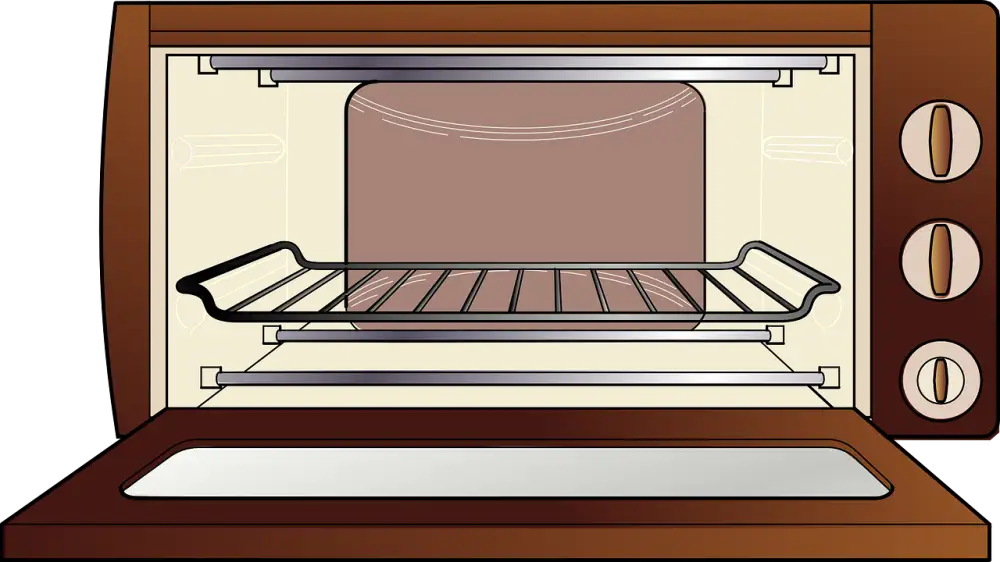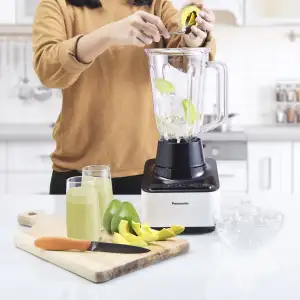Master the Art of Cooking with a Convection Oven: Elevate Your Home Culinary Experience

Introduction to Convection Ovens:
Are you tired of unevenly cooked meals and long cooking times? It's time to upgrade your kitchen with a convection oven. A convection oven is a modern appliance that uses a fan and exhaust system to circulate hot air evenly around your food, resulting in faster and more efficient cooking. Whether you're a professional chef or an amateur cook, mastering the art of cooking with a convection oven will elevate your home culinary experience to new heights. In this article, we will explore how convection ovens work, the benefits of using them at home, and provide some tips for using them effectively. Get ready to embark on a flavorful food adventure!
How convection ovens work
Convection ovens work by using a fan to circulate hot air throughout the cooking chamber. This constant movement of air ensures even heat distribution, resulting in faster and more efficient cooking. The fan helps to eliminate hot spots and reduces cooking time by up to 25%. The circulating air also helps to remove moisture from the food, creating a crispy exterior while keeping the inside moist and tender. With convection ovens, you can achieve perfectly cooked dishes with less effort and time.
Benefits of using a convection oven at home
Using a convection oven at home offers numerous benefits that can elevate your culinary experience. Firstly, convection ovens cook food faster and more evenly than conventional ovens. The fan inside the oven circulates hot air, ensuring that heat reaches every corner of the oven cavity. This results in shorter cooking times and eliminates the need for constant monitoring and rotating of dishes.
Additionally, convection ovens are known for their ability to produce crispy and golden-brown exteriors while keeping the interiors moist and tender. The circulating hot air creates a dry environment, perfect for achieving that desirable crust on roasted meats, baked goods, and even vegetables.
Another advantage of using a convection oven is its versatility. It can be used for various cooking methods such as baking, roasting, broiling, and even dehydrating. With adjustable temperature settings and multiple racks, you can cook multiple dishes simultaneously without worrying about flavor transfer.
Furthermore, using a convection oven can lead to healthier cooking. The faster cooking time helps retain more nutrients in food compared to traditional methods. Additionally, since convection ovens require lower temperatures to achieve the same results as conventional ovens, they consume less energy and are more environmentally friendly.
In summary, the benefits of using a convection oven at home include faster and more even cooking, enhanced texture and flavor of dishes, versatility in cooking methods, and healthier food preparation. By incorporating a convection oven into your kitchen arsenal, you can take your home cooking to new heights.
Tips for using a convection oven effectively
Tips for Using a Convection Oven Effectively:
1. Adjust the cooking time and temperature: Since convection ovens circulate hot air, cooking times can be reduced by about 25%. Lower the temperature by 25°F to prevent overcooking.
2. Use shallow pans: For optimal airflow, use shallow baking pans rather than deep ones. This allows the hot air to evenly distribute and cook your food more efficiently.
3. Avoid overcrowding: Leave enough space between dishes to ensure proper circulation of hot air. Overcrowding can lead to uneven cooking and longer cooking times.
4. Reduce oven temperature for delicate items: When baking delicate items like cakes or soufflés, lower the oven temperature by an additional 25°F to prevent them from rising too quickly and collapsing.
5. Rotate pans halfway through cooking: To ensure even browning, rotate your pans halfway through the cooking process. This helps to avoid any hot spots in the oven that may cause uneven cooking.
6. Check for doneness earlier: Since convection ovens cook faster, it's important to check for doneness a few minutes earlier than recommended in recipes. Use a thermometer or toothpick test to determine if your food is cooked through.
7. Keep an eye on moisture levels: Convection ovens can cause foods to dry out more quickly due to the circulating air. To retain moisture, cover dishes with foil or use a water bath when necessary.
By following these tips, you can make the most of your convection oven and elevate your home culinary experience with perfectly cooked meals every time!
Popular recipes to try in a convection oven
Popular Recipes to Try in a Convection Oven:
1. Roasted Chicken: Achieve crispy skin and juicy meat by roasting a whole chicken in a convection oven. The circulating hot air ensures even cooking for a delicious result.
2. Baked Goods: From cookies to cakes, convection ovens are perfect for baking. The consistent heat distribution helps create evenly browned and perfectly risen treats.
3. Pizza: Craving a homemade pizza? Use the convection oven's high heat setting to achieve a crispy crust while melting the cheese and toppings to perfection.
4. Vegetables: Roasting vegetables in a convection oven brings out their natural flavors and caramelizes them beautifully. Enjoy tender yet slightly crisp veggies with minimal effort.
5. Fish Fillets: Cook delicate fish fillets effortlessly in a convection oven. The quick cooking time and even heat distribution ensure moist, flaky results every time.
6. Casseroles: Whether it's lasagna or macaroni and cheese, casseroles cook evenly and quickly in a convection oven, allowing the flavors to meld together perfectly.
7. Bread: Bake artisanal bread with ease using the convection oven's consistent heat circulation. Achieve crusty exteriors and soft interiors for bakery-quality loaves.
Try these popular recipes in your convection oven to elevate your culinary creations at home!
Maintenance and cleaning tips for convection ovens
Maintenance and cleaning are essential for keeping your convection oven in top shape. Here are some tips to help you with this task:
1. Regularly clean the interior of the oven using a mild detergent and warm water. Avoid using abrasive cleaners or harsh chemicals that can damage the oven's surfaces.
2. Remove any food spills or grease immediately after each use to prevent them from hardening and becoming difficult to remove later on.
3. Clean the oven racks separately by soaking them in warm, soapy water and scrubbing off any residue with a soft brush or sponge.
4. Use a damp cloth or sponge to wipe down the exterior of the oven, including the control panel and door handle. Avoid getting water into any of the electrical components.
5. Check and clean the oven's ventilation system regularly to ensure proper airflow. This will help prevent overheating and maintain optimal cooking performance.
6. If your convection oven has a self-cleaning function, follow the manufacturer's instructions for using it safely and effectively.
By following these maintenance and cleaning tips, you can prolong the lifespan of your convection oven and ensure that it continues to deliver exceptional cooking results for years to come.
Comparison between convection ovens and conventional ovens
When it comes to cooking appliances, the debate between convection ovens and conventional ovens is a common one. While both types of ovens have their merits, there are some key differences that set them apart.
One major difference is the way heat is distributed in each type of oven. In a conventional oven, heat radiates from the bottom and top heating elements, resulting in uneven cooking. On the other hand, convection ovens use a fan to circulate hot air throughout the oven cavity, ensuring even heat distribution. This means that food cooks more quickly and evenly in a convection oven.
Another advantage of convection ovens is their ability to cook at lower temperatures. The circulating hot air allows for faster cooking times, which can save energy and reduce cooking time. Additionally, convection ovens are great for baking as they create a crispier crust and more evenly browned baked goods.
However, there are some instances where a conventional oven may be preferred. For dishes that require moist cooking environments such as casseroles or custards, a conventional oven may be better suited as the dry heat of a convection oven can cause these dishes to dry out.
In terms of price, convection ovens tend to be more expensive than conventional ovens due to their additional features and technology. However, the benefits of faster cooking times and improved results may outweigh the cost for avid home cooks.
Ultimately, the choice between a convection oven and a conventional oven depends on personal preference and cooking needs. If you value efficiency, even cooking, and versatility in your culinary endeavors, investing in a convection oven may be worth considering.
In conclusion, a convection oven is a game-changer for home cooks. Its ability to circulate hot air evenly around the food ensures faster and more even cooking, resulting in deliciously crispy and perfectly cooked dishes. The benefits of using a convection oven are numerous - from reduced cooking time to energy efficiency. By following some simple tips and trying out popular recipes, you can elevate your culinary skills to new heights. So why not invest in a convection oven and take your home cooking experience to the next level? Your taste buds will thank you!
Published: 19. 12. 2023
Category: Home



